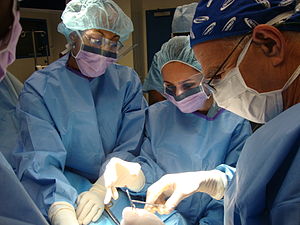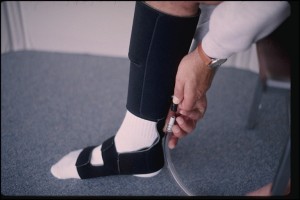When you think of therapeutic pneumatic compression pumps, what comes to mind? Many might think of lymphedema or DVT prophylaxes, but it is less widely-known that arterial pump compression therapy, if correctly applied, can actually treat severe PAD.
ArtAssist®…The Arterial Assist Device® (Arterial Pump Technology) should not be confused with lymphedema or DVT prevention treatment because the ArtAssist® device solves an entirely different problem: facilitating arterial blood flow to the places that need it, especially in the legs and feet (there are also cuffs available for arms, though it is somewhat less common).
So, for example, if you have atherosclerosis (hardening of the arteries) of the lower extremity or a diabetic foot ulcer, your problems would not be solved with a lymphedema pump, even if it has been modified to be more powerful. (Side note: some arterial pump makers advertise that a more powerful lymphedema or DVT pump will effectively treat arterial disease. We at ACI Medical suggest that you ask for their clinical evidence.)
Depending on the nature and severity of your arterial disease, you may be better advised to use the ArtAssist® device. This device was not based on a lymphedema or DVT pump design – rather, the ArtAssist® device was designed by vascular surgeons with the goal of increasing arterial flow for patients with poor leg circulation.
Researchers have discovered that, unlike lymphedema pump technology, the ArtAssist® device promotes what we call arteriogenesis, or collateralization. These two synonyms refer to the opening of small collateral arteries that already naturally bypass the obstructed artery. We all have these small collateral arteries, but when the main artery has no blockages, the collateral ones aren’t needed.

Arteriogenesis (or collateralization) explains why patients have long-term results after stopping ArtAssist® device usage
In this case, a person with a blocked artery needs to take action so that blood gets where it needs to be. Sometimes, people make lifestyle changes, such as dieting and exercising. Other times, people take medication to improve blood flow. And in more severe cases, people resort to surgery such as bypass and endovascular procedures (e.g. stenting, angioplasty, etc.).
The problem is that some people exhaust all of those options and vascular surgeons believe they have no other choice but to amputate – but that’s not true! There is actually one last shot at limb salvage for these patients, and that is the ArtAssist® device. In one clinical study, it was shown to have up to a 94% limb salvage rate even after 3.5 years.
Do be advised, though: no one would ever recommend that you let it get to the point of amputation. As with all diseases, the earlier you solve the problem, the better.
If you or someone you know could use the ArtAssist® device as a non-surgical solution for PAD, please call our toll free number 888-453-4356 and ask to talk to Don or Sylvia. If you contact me (via WordPress, Twitter, Facebook, email, website, etc.), I will refer you to either of the two people I just mentioned as quickly as I can – we know how important limb salvage is.








 After some educated guessing, Paul van Bemmelen, MD, PhD of Temple University began looking into the hypothesis more closely.
After some educated guessing, Paul van Bemmelen, MD, PhD of Temple University began looking into the hypothesis more closely. 





